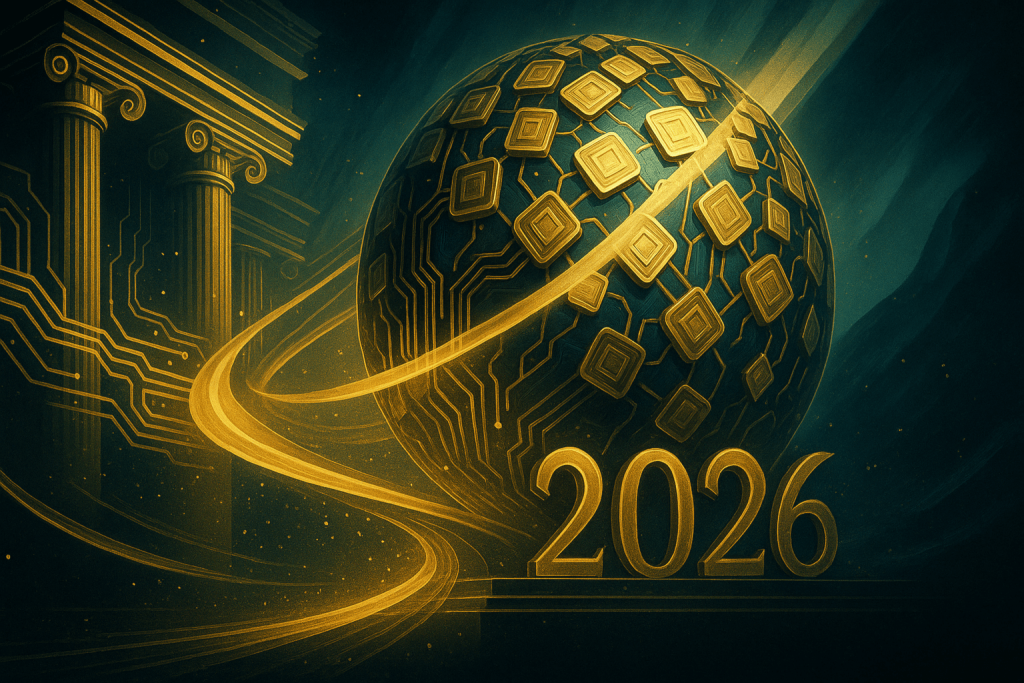Asset Tokenization Is Going Mainstream in 2026

We’ve been saying it and building it for years: Tokenized assets are the next phase of the financial system. Across capital markets access, regulatory pathways, large scale initiatives and collateral operations, we see how friction continues to decline along asset life cycles and the addressable universe of on-chain financial activity continues to expand. Going into 2026, here are some of the clearest signals the market is sending:
1) Standard Chartered: All transactions will be tokenized
As Bill Winters, CEO of Standard Chartered, put it: “pretty much all transactions will be tokenized”. Smart, programable assets that can generate yield and qualify as collateral enable capabilities currently absent from traditional finance. This is why Standard Chartered forecasts that $2T will be tokenized by 2028.
2) Market plumbing: real-time settlement and collateral mobility
Don Wilson, CEO of DRW, one of the most influential investment and technology firms in global finance, recently said that he views crypto as “a warm-up to on-chain traditional finance trading". DRW was one of the first trading firms to enter crypto, in 2014, and it just completed real-time DvP repo transactions over a weekend using tokenized U.S. Treasuries, with the required cash settled in stablecoins and privacy preserved via a permissioned network.
DRW is the latest company to show the benefits of financial asset tokenization, providing operational gains independent of asset price cycles, such as always-on liquidity (even on weekends), and greater collateral mobility.
3) Largest scale: Europe’s tokenization industry keeps booming
The latest EU announcement has been made by post-trade services giant Clearstream. The company, which has €20 trillion in assets under custody, is one of the world’s largest securities settlement and custody firms. It just announced the launch of its proprietary asset tokenization platform.
Clearstream’s new tokenization platform is fully compliant with the EU Central Securities Depositories Regulation (CSDR). The first expected issuances are commercial paper (CP) and medium-term notes (MTNs). These fully compliant assets can now be fractionalized and traded instantly thanks to tokenization.
4) First tokenization provider to list on Nasdaq
Nasdaq recently announced that investors can have their assets settled in tokenized form. Now Securitize, a tokenization services provider from the U.S., just announced plans to list publicly on Nasdaq via a SPAC merger, with a pre-money valuation of $1.25 billion.
This upcoming listing highlights the tokenization industry’s path from niche to mainstream: perceived as an experimental, unproven and unregulated technology for much of its existence, it is now at the center of the conversation. From the Bank for International Settlements to the CEOs of the largest financial institutions and regulators everywhere, asset tokenization is now widely seen as the next financial infrastructure.
5) Stablecoins: Programmable money knows no boundaries
A growing number of banks, fintechs, and even governments are issuing stablecoins. Their total market cap is on track to surpass $300 billion by the end of 2025, with much of its growth set to be driven by real world asset (RWA) transactions.
As DRW and many others demonstrate, stablecoins provide instant, 24/7, borderless liquidity for tokenized assets. Coupled with programmability, they sharply reduce counterparty risk and operating costs, making them a perfect fit for tokenized financial trading.
6) Global liquidity: Bridging the Atlantic regulatory gap
21X, a European TSS operator, is exploring how to mirror key exemptions in the U.S. The firm has engaged with the SEC, signaling interest in a U.S. configuration that would rely on existing legislation alongside targeted exemptive relief. If exemptions can be harmonized across regions, cross-border issuance and secondary liquidity will benefit tremendously, accelerating adoption and promoting faster industry growth.
Asset concentration, arguably the single most important metric to gauge the industry’s growth, is set to start snowballing thanks to faster, cheaper and more accessible transatlantic liquidity.
7) Institutiona drive: Investment banks are accelerating RWAs
J.P. Morgan recently tokenized interests in a private equity fund on its own proprietary platform, offering access to private bank clients, with a larger scale rollout coming later. According to the investment bank, tokenization will eventually provide a standard for alternatives distribution and operations.
With that in mind, J.P. Morgan has piloted the full lifecycle of a closed-end alternative investment vehicle: onboarding, transfer restrictions, reporting, and secondary liquidity within controlled client segments. Among the largest financial institutions, J.P. Morgan’s stated vision and piloted projects puts it close to BlackRock as one of the most vocal and active proponents of asset tokenization.
Our vision of a tokenized economy is taking shape. Companies of all sizes improve their operational baseline, interoperability tightens, the scope of financial assets widens, capital becomes more accessible, and regulation continues to provide stronger legal frameworks. Token City leads the way in Southern Europe and Latin America, and soon our upcoming 2025 and 2026 milestones will dramatically increase our offerings and scale.
Stay tuned for more!
Enter the new tokenized economy
Token City is the ultimate bridge to the tokenized economy (tEconomy), in which tokenized companies (tEnterprises) create their cryptoasset markets (tMarkets), open to global investors (tCitizens).

